Alfred Hitchcock is unquestionably the greatest director of suspense films in cinema history. His best films are marked by sequences of suspense that are memorable, exciting, engaging and cinematically magnificent.
Hitchcock described the difference between suspense and surprise by giving the illustration of two men sitting at a table with a time bomb set to go off underneath. If you just want to go for surprise, you don’t show the bomb, you just show the men talking and then eventually the whole thing blows up…SURPRISE!
But if, as Hitchcock preferred, you would like to milk the scene for suspense, you cutaway from the two men to shots of the bomb as it ticks down to zero and goes off…then you have added a considerable amount of suspense to the mixture.
Here then, are the 20 greatest suspense sequences in Hitchcock’s films in order from least to best. Some of these are more famous than others, but they all contain the ‘Hitchcock touch’ and are sure to thrill you.
It was tough to narrow it down to 20, so we must include some honorable mentions such as the “Knife!” sequence in Blackmail, the milk scene in Suspicion, the carousel breakdown at the end of Strangers on a Train, the police stalking sequence in Psycho, the bird attack on Bodega Bay in The Birds and the bus escape sequence in Torn Curtain.
20. The Music Hall sequence in The 39 Steps (1935)
Richard Hannay (Robert Donat) enters a music hall in London where a man named “Mr. Memory” is performing. Claiming to have a photographic memory and to memorize “50 new facts a day”, Memory asks the audience for questions and then gives them the answer to their amazement.
But the rough hewn, drinking crowd grows rowdier and rowdier and eventually a fight breaks out. In the midst of the uproar, a hand appears firing two shots from a pistol. The music hall clears out and Hannay ends up with a beautiful, mysterious woman, who ends up coming with him back to his flat.
While Hitchcock gives up a certain amount of suspense in this sequence for surprise (the first time we see the gun is when it goes off, had he been wanting to create suspense we would have seen the gun earlier), he builds tension admirably by withholding Hannay from our view at first, making him a man of mystery to the audience.
As the crowd in the Music Hall grows more and more excited, eventually into a fever pitch, the scene builds with explosive violence. The Music Hall sequence begins The 39 Steps with a bang, and the film bookends the sequence with the finale at the London Palladium, when Mr. Memory again appears and reveals the ‘MacGuffin’ that the entire film has revolved around.
19. The robbery of Rutland’s safe in Marnie (1964)
Marnie Edgar (Tippi Hedren) is a frigid, kleptomaniac who has been hired by Mark Rutland (Sean Connery) as a payroll clerk. One Friday Marnie stays late at work in order to rob the office safe at Rutland’s. As Marnie robs the safe, a cleaning lady arrives and starts to mop the floor; in order to show both actions, Hitchcock cuts to a long shot showing Marnie on the right side of the screen and the cleaning lady on the left.
As Marnie tries to leave she sees the cleaning lady and, in order not to be heard, she puts her high heeled shoes in her coat pocket. However, as she leaves, we see one of her shoes slowly coming out of her pocket. The shoe crashes to the floor but the cleaning lady does not react. It turns out she is hard of hearing and hasn’t heard a thing, and Marnie scurries out of the building with the payroll cash in tow.
Hitchcock turns this simple scene into a masterwork of suspense filmmaking. Firstly, he avoids the cliche of cutting between the cleaning lady mopping and Marnie robbing the safe by showing both actions in one static long shot. As has been pointed out by others, this shot combines both elements of mis en scene and montage in one unique shot, and also serves as an homage to the avant grade European filmmakers of the time who were utilizing techniques such as this one in their films.
Secondly, Hitchcock upends our expectations when Marnie’s shoe (literally) drops to the floor and the cleaning woman does not react. As often happens in Hitchcock, we are manipulated into rooting for someone to get away with something bad and in this case Marnie escapes cleanly when the woman ‘miraculously’ doesn’t hear her. Although this is not one of Hitchcock’s best known suspense scenes, close analysis of it reveals a director working at the top of his game.
18. The wine cellar scene in Notorious (1946)
Alicia (Ingrid Bergman) and Devlin (Cary Grant) go to investigate Alex Sebastian’s wine cellar during a party at the Sebastian home. As Devlin looks at the bottles, one slips off the shelf and breaks, revealing some ‘vintage sand’ with which the Nazis are using to try to make an atomic bomb. Devlin scopes up some of the sand then tries to put things back as best he can.
Meanwhile, upstairs at the party, Hitchcock shows the rapidly diminishing supply of champagne, until the butler informs Sebastian that they need more and they go down to the wine cellar. When Sebastian sees Alicia and Devlin together, Devlin improvises, grabbing Alicia and kissing her to divert attention away from the real reason they are down in the basement during the party. During the kiss, Alicia realizes her feelings of love for Devlin are real.
The wine cellar scene in Notorious shows Hitchcock utilizing his skills at suspense to reveal the tension between the characters that primarily informs the film. The revelation of the uranium ore in the wine bottles confirms the Nazi’s nefarious activities, while tying in with the motifs of intoxication and poisoning that make up the film’s major themes.
When Devlin must kiss Alicia in order to deflect Sebastian’s suspicions about what they are doing, the romance of the moment reveals the true feelings underlying the deception and deceit of the main characters. Unfortunately, the ruse does not work and Sebastian figures out the Alicia is an American agent, leading to his eventual attempted poisoning of her.
17. The cigarette lighter sequence in Strangers on a Train (1951)
As Guy Haines (Farley Granger) plays a tennis match, Bruno Antony (Robert Walker) goes to Metcalf to place a cigarette lighter at the scene of the murder of Guy’s estranged wife, Miriam, in the hopes that it will incriminate Guy. But Bruno drops the lighter when a passerby bumps into him and the lighter falls down into a sewer drain.
Hitchcock then cuts between Bruno’s efforts to squeeze his arm down into the drain to retrieve the lighter and Guy’s hurried efforts to finish his tennis match so he can get to Metcalf in time to stop Bruno. Finally Bruno retrieves the lighter and Guy wins his match, and the two of them head off for their final showdown.
A classic suspense sequence, Hitchcock repeatedly manipulates the audience’s emotions in this scene from his mid period comeback film. Bruno’s efforts to retrieve the lighter from the dark drain are contrasted with the brightly lit shots of Guy playing a tennis match.
Although the audience should be rooting for Guy, the ostensible ‘good guy’ of the film, we can’t help but also root for Bruno to retrieve the lighter, since it sets off the events that lead to the film’s climactic conclusion. This sense of having one’s emotions manipulated in a pleasurable way is common in Hitchcock’s films, and has helped to lead to the director’s enduring and long lasting popularity.
16. The run away car sequence in Family Plot (1976)
Blanche (Barbara Harris) and Lumley (Bruce Dern) are on the trail of Arthur Adamson (William Devane). Adamson and his sidekick, Maloney (Ed Lauter) want them dead, so Maloney lures them to a remote mountain tavern for a meeting. Maloney is a no show, and while Lumley puts on a nice beer buzz, Maloney fixes the brakes and accelerator on their car not to work.
As Lumley and Blanche drive down a stretch of winding mountain road, their car careens wildly out of control, threatening the life of the pair as well as a number of other drivers on the road. Lumley eventually has to crash the car into the side of an embankment to get it to stop, ending their harrowing ride.
Although this sequence is a bit more of a typical action film suspense sequence, lacking Hitchcock’s usual nuance and subtlety, it remains nonetheless a tour de force of editing and camera work. Marred only slightly by some awkward looking rear projections shots, the sequence features great footage of an out of control car driving wildly down a mountain road. The sequence was also a hit with audiences, tapping as it did into all of our primal fears of being in a scary situation that goes totally out of control.
15. The rape/murder of Brenda in Frenzy (1972)
Bob Rusk (Barry Foster) enters the offices of a matrimonial agency, The Blaney Bureau, at lunchtime. He has been after Brenda Blaney (Barbara Leigh-Hunt) to find him woman who will submit to his masochistic desires and now, when Brenda tells him they cannot help him, he flies into a rage.
First, he brutally rapes her and then, when he is finished, he begins to loosen his tie. Brenda realizes to her horror that he is the necktie murder that has been terrorizing London, and that the rape is only a prelude to her strangling murder, which takes place next. After the murder, Rusk casually picks up Brenda’s apple and eats it, suggesting that by killing her he has consumed her, just as a normal person might eat their lunch.
This sequence upset many, who were used to Hitchcock handling his death scenes with more artistry and style. But Hitchcock was only making use of the newly relaxed censorship rules to show how brutal and awful the acts of his killer were, so that the audience could really understand the true horror of his crimes.
Later in the film, when Rusk enters his apartment with Babs with the intent of killing her, Hitchcock showed restraint by pulling the camera back so as to not show the terrible act that was about to happen, forcing the audience to use their imagination about the demise of Babs.
14. The marketplace death of Louis Bernard in The Man Who Knew too Much (1956)
Ben and Jo McKenna (James Stewart and Doris Day) are an American couple on vacation in Morocco with their son, Hank. They befriend Louis Bernard (Daniel Gelin), a Frenchman, who stands them up for dinner. The next day they go to the market with their new friends, the Draytons, when a scuffle breaks out.
A man in a robe and hood is being chased by the pollce; eventually he is stabbed in the back by another man in a robe. The man stumbles into the marketplace with the knife in his back and staggers towards Ben. The man is Louis Bernard in disguise, and as he dies in Ben’s arm he whispers a secret to him about an assassination attempt of a foreign diplomat that is being planned in London.
The death of Bernard in the 1956 version contrasts substantially with the scene in the 1934 British original, in which Bernard is shot by a sniper from a distance during an evening dance. This sequence is much more suspenseful and menacing, with Bernard suffering the agony of a knife in his back before he dies. The Americans abroad are threatened by virtually everyone, including the police, the authorities, the Arabs and the seemingly friendly English couple, the Draytons.
This sequence is a classic example of a brightly lit, public place in Hitchcock turning into an ominous and threatening locale, particularly after the McKenna’s son is kidnapped by the assassins and they are thrown into a world of foreign intrigue that they couldn’t imagine at the film’s beginning.
13. Lila’s exploration of the Bates house in Psycho (1960)
While Sam Loomis (John Gavin) distracts Norman Bates (Anthony Perkins), Lila Crane (Vera Miles) walks towards the gloomy, gothic home behind the motel in order to speak with Mrs. Bates. Lila investigates the home room by room as things get creepier and creepier. Mrs. Bates room is filled with ornate Victorian memorabilia, including a mirror that shocks Lila (and the audience) when she sees her own reflection.
Norman’s tiny room seems to reveal a man-boy in a sad state of perpetual childhood. Finally, Norman and Sam struggle, and after Norman conks Sam on the head, he runs towards the house. Lila sees him coming, which sends her down in the fruit cellar to hide.
There she confronts what appears to be the elderly Mrs. Bates sitting peacefully in a chair, who turns out to be nothing more than a dried up skeleton wearing a dress and a wig. Norman bursts in, dressed as his mother, and attempts to knife Lila before Sam arrives just in time to stop him.
This sequence is the penultimate sequence in Psycho, Hitchcock’s greatest film. The editing and camera work are brilliant, as Hitchcock’s uses the device of the shot/reverse shot that he frequently employed to allow audiences to identify with a character in trouble. But the technique that makes this sequence truly great is the sensation that the audience has of finally being allowed into the secret world of the Bates home that has been withheld from them all along.
Our curiosity has gotten the best of us and, like Lila, we have to know what is going on in that house. In this sequence we are finally allowed to get a glimpse into the mad world of Norman Bates, and our expectations are turned on us and against us. It is a masterpiece of low budget horror filmmaking by the best.
12. Uncle Charlie’s death in Shadow of a Doubt (1943)
Charles Oakley (Joseph Cotton) is getting ready to leave Santa Rosa, much to the relief of his niece and namesake, Charlie Newton (Teresa Wright). But at the Santa Rosa train station, Charlie and the younger kids go on the train to see Charles off. After the kids get off the train, Charles prevents his niece from leaving on the pretext that he wants to speak with her.
In reality, he wants to kill her since she is the only one who can prove that he is the ‘Merry Widow Murderer’, a serial killer who has been murdering wealthy widows. Charles grabs Charlie and holds her, telling her that he wants to wait until the train gets a little faster before pushing her off. But at the last moment, the young girl gets her balance and turns the table on her uncle, who falls into the path of an oncoming train to his grim demise.
Does Uncle Charles really want to kill young Charlie, or does he, in fact, want her to kill him instead? Some have interpreted this complex sequence to suggest that Charles is completing his ‘education’ of his young niece. While he holds her and waits for the train to speed up, there is a quick shot from Charlie’s POV of the rushing tracks that seems to indicate the nothingness of Uncle Charles’ nihilistic world view point.
It seems unlikely that the young Charlie could overcome the iron grip of her stronger uncle and push him off the train, so one might look at this sequence as suggesting that Charles in fact commits ‘suicide’ in a way, with Charlie’s help, and thus completes her ‘education’ in making her able to kill the thing that she loves most, her beloved uncle.
At the end of the film, she stands outside the church during his funeral, looking off into the distance; a young woman who, very much like America during the war, has lost her innocence.
11. The bomb explosion on the bus in Sabotage (1936)
Mr. Verloc (Oscar Homolka) is a saboteur living in London who runs a movie theater. He sends his wife’s younger brother, Stevie (Desmond Tester) on an errand to deliver a film canister, which actually contains a time bomb set to go off at 1:45 PM. But the boy becomes distracted watching a parade and takes longer than expected, eventually getting on a crowded London bus that contains a cute dog that Stevie plays with.
The audience watches in agony as the time gets closer and closer, until finally 1:45 arrives and the bus is blown to bits, killing everyone and everything aboard.
This was an example of the classic suspense sequence that Hitchcock had envisioned, and he shot and edited the sequence to perfection. But in this case it worked against him, as audiences were so outraged that the bus had actually blown up, killing the young boy and the dog and many other people, that the film failed commercially.
This despite the fact that Mrs. Verloc (Sylvia Sydney) gets some revenge later when she knifes her husband to death after she finds out what he has done in another highly suspenseful sequence. Still, Hitchcock learned a lesson about audience manipulation; you can give them suspense, but when you get right down to it, you are better letting them off the hook. Unless it’s the bad guy, that is, in which case you can go ahead and blow him up!
10. Miriam’s murder in Strangers on a Train (1951)
Guy Haines has met Bruno Antony on a train, and now Bruno sets out to murder Guy’s unfaithful wife, Miriam (Kasey Rogers) as a part of the bargain he has proposed. Bruno stalks Miriam, following her and her two dates to an amusement park while Miriam flirts begins to flirt with him when she realizes she is being followed.
They go eventually on the “Tunnel of Love” boat ride where Bruno finds Miriam isolated and away from her dates on a small island. He lights up her face with Guy’s lighter, verifying that she is Miriam, and strangles her to death quickly and brutally before picking up Miriam’s broken glasses and Guy’s lighter and escaping.
This sequence contains the usual great Hitchcock pacing and editing, plus dark, extended shadows that heighten the suspense. But the culmination of the sequence is Miriam’s murder, which Hitchcock shows us in one of his greatest trick shots, reflected distortedly in Miriam’s eyeglasses that have fallen to the ground during Bruno’s attack.
Hitchcock pulled off the shot by using a large, concave reflector in the studio with Roger’s image reflected in it, as well as a double printed image of Bruno attacking Miriam that he had shot earlier. The shot worked perfectly and became one of Hitchcock’s best known images of the horror of murder.
9. The attempted murder of Margot in Dial ‘M’ for Murder (1954)
Tony Wendice (Ray Milland) plots the murder of his attractive but unfaithful wife, Margot (Grace Kelly) by blackmailing a small time criminal, C.A. Swann (Anthony Dawson) into trying to murder her. Wendice is to call his apartment while he is out at a stag party with Margot’s lover, Mark Halliday (Robert Cummings), at exactly 11 PM.
Swann, meanwhile, who has entered the apartment at the specified time, attacks Margot from behind with the intent of strangling her after she answers the phone. Margot, however, reaches out during the struggle desperately and retrieves a pair of sewing scissors that are on the desk and uses them to stab Swann in the back. He falls to the floor and the scissors go all the way in, killing him.
Coming at the halfway point of this 3-D filmed version of a stage play that is otherwise rather talky and dialogue bound, the attempted murder of Margot is undoubtedly the film’s high point. Hitchcock heightens the suspense when Tony’s watch stops at the stag party and he realizes that it is now several minutes after 11 PM, so he must rush to try and make the phone call as quickly as he can to make sure Swann is still in the apartment.
Hitchcock built a huge model of the phone dial so he could include a large close up of Tony’s finger dialing “M” to initiate the murder. After Swann attacks Margot and she is reaching for the scissors, the effect is heightened by the 3-D technology of the film, as Margot seems to be reaching into the audience to get the scissors. Highly suspenseful and dramatic, this sequence remains one of the best remembered moments of Hitchcock’s career.
8. The potato truck sequence in Frenzy (1972)
Bob Rusk has brutally murdered barmaid Babs (Anna Massey) in his apartment and dumped her body in a truck carrying a load of potatoes. But as he relaxes on his couch, he notices that his monogrammed tie pin is gone, and realizes that it must be stuck in the hands of the dead woman. He rushes to to the truck to try to find the body and retrieve the incriminating evidence, but before he can do so the driver jumps in the truck and takes off.
The audience watches with a mixture of horror and humor as Rusk pulls the body out and finally wrenches the pin from the fingers of Babs, which have stiffened up in the first stages of rigor mortis. When the driver stops at a truck stop, Rusk escapes, but a loose pin causes the rear hatch of the truck to open, spilling potatoes on the road.
When a passing police car tries to stop the truck to let him know he is spilling his load, he slams the brakes on suddenly and Babs’ dead, naked body falls out much to the surprise of everyone.
A sequence that is shocking and at times disgusting, the potato truck sequence also reveals Hitchcock reveling in his unique brand of dark, comic black humor. There is the typical suspense as we cut between the slightly bored, unaware driver and the frustrated, enraged Rusk, who is trapped in the back of the truck and is being taken on an unwanted ride.
Hitchcock again manipulates the audience’s emotions here, as we enjoy seeing the evil Rusk struggle with trying to free the tie pin from Babs’ hand as the barmaid seems to be getting some revenge on her attacker from beyond. But we also are forced to, in a sense, root for Rusk to get the pin back, as we want him not to be caught at this point so that the story can go on to its more logical conclusion.
The potato truck sequence from Frenzy was Hitchcock’s final truly great suspense sequence, and in making it the director must have thoroughly enjoyed himself this one last time.
7. The mission tower “suicide” in Vertigo (1958)
John “Scotty” Ferguson (James Stewart) has fallen in love with Madeleine (Kim Novak), the wife of Gavin Elster (Tom Helmore), whom he has been following as a favor to his old schoolmate. Madeleine appears to be obsessed by a long lost dead relative, Carlotta Valdes, and Scotty has taken her to an old Spanish mission in order to excise a dream that she has had and rid her of her obsession.
But the plan backfires when Madeleine rushes from Scotty’s arms and into the mission church, then up the stairs into the church’s bell tower. Scotty desperately tries to follow her, but his fear of heights overcomes him, and he is unable to reach the top of the tower.
Madeleine disappears through a hatch onto the tower roof, then apparently throws herself from the top of the tower as Scotty watches in horror. He sees her body fall past the tower window then looks down at Madeleine’s dead body lying on the mission roof below.
Vertigo is now considered Hitchcock’s greatest accomplishment, and the story of obsession, love and loss reaches its mid-film climax with this scene, which contains Hitchcock’s best known trick shot. As Scotty attempts to climb the mission tower, he looks down the stairs; Hitchcock wanted a special shot to show the sense of vertigo that Scotty is experiencing. He created a miniature of the tower (which was itself a created set, as the real location, Mission San Juan Baptista, did not have an actual tower) and put a special effects camera on it with a lens that was capable of zooming in while the camera itself tracked back.
The effect worked perfectly, giving the viewer a sense of disorientation and dizziness while still keeping everything in the right perspective. This great effects shot, plus Bernard Hermmann’s dramatic score and the acting of Kim Novak and Jimmy Stewart, make the tower sequence in Vertigo one of Hitchcock’s greatest moments.
6. The Mount Rushmore sequence in North by Northwest (1959)
Roger Thornhill (Cary Grant) frees Eve Kendall (Eva Marie Saint) from the clutches of Philip Vandamm (James Mason) and they try to flee to safety, pursued by Vandamm’s henchman and his secretary, Leonard (Martin Landau). But Roger and Eve find themselves trapped on top of the Mount Rushmore monument, fighting for their lives.
Roger and Eve try to climb down the monument to safety, but Leonard pushes Eve off and she is soon hanging on precariously for dear life. As Roger tries to pull her up, Leonard viscously steps on his fingers in order to make them both fall, but he is shot by the park rangers standing on the other side and Roger pulls Eve up to safety and into an upper berth on the train, which roars into a tunnel in one of film’s greatest phallic symbols of all time.
Hitchcock had attempted this type of sequence before at the conclusion of his 1942 film Saboteur, in which innocent Barry Kane (Robert Cummings) is pursued across the country, falsely accused of killing his friend and committing sabotage.
In that sequence, the real villain, Frye (Norman Lloyd) is the one who hung on from a national monument (the Statue of Liberty) and while his fall to his death was dramatic, Hitchcock realized that it would be better for the good guys (in this case Eve and Roger) to be the ones hanging on for dear life. He first envisioned the story concluding with a chase across the face of Mount Rushmore, so much so that the working title of the film was “The Man in Lincoln’s Nose”.
Hitchcock couldn’t get the National Park Service to allow him to film on top of the monument, so he built a giant model of it at MGM studios. It all worked to perfection and became one of the director’s most memorable sequences.
5. The bird attack on Melanie in the attic in The Birds (1963)
Melanie Daniels has come to Bodega Bay for a seemingly carefree weekend with the Brenners, when a series of bird attacks puts their lives in jeopardy. After a final attack on the boarded up Brenner home, Melanie goes to the attic when she hears a noise, and she is set upon by dozens of vicious gulls, who peck at her with the apparent intent to kill her.
After fighting off the birds for a couple of minutes, Melanie is overcome and slumps down to the floor, helpless under the assault, when Mitch (Rod Taylor) and Lydia (Jessica Tandy) come to her aid. They finally push the door open and drag her out, but Melanie is seriously injured and the Brenners know they must brave another possible bird attack by getting Melanie to a hospital to have her injuries treated.
By 1962, when Hitchcock made The Birds, he had created so many great suspense sequences that he felt like he continually had to top himself or audiences would be disappointed. In order to shoot this scene, new star Tippi Hedren was subjected to a week of bird attacks that were so severe that she eventually had a serious cut near her eye and finally suffered a minor nervous breakdown.
This experience has been document in the recent film, The Girl (2012). For Hedren’s bravery and hard work, we have left one of Hitchcock’s greatest suspense sequences. The fast cutting is reminiscent of the shower scene in Psycho and the use of great sound effects and no music lends a unique and highly dramatic quality to the sequence.
Tippi Hedren is to be applauded for submitting to a week of torture in order to create these great moments on screen, and even agreed to work for Hitchcock again the next year in Marnie.
4. Thorwald’s attack in Jeffries in Rear Window (1954)
Photographer L.B. Jeffries (James Stewart) sits in his New York apartment with a broken leg, watching his neighbors and concluding that one of them,, Lars Thorwald (Raymond Burr), has killed his wife. After his girlfriend, Lisa (Grace Kelly), is arrested for breaking into Thorwald’s apartment and nurse Stella (Thelma Ritter) has gone to bail her out, Jeffries is alone in his apartment. Since Thorwald now knows that Jeffries suspects him, he comes to his apartment with the intent of having it out.
Although Jeffries tries to slow Thorwald down by blinding him with flash bulbs, the vicious killer eventually attacks the wheelchair bound photographer. After a struggle, Thorwald succeeds in pushing Jeffries out of his apartment window, but the police arrive in time to grab the killer and Jeffries survives the fall, ending up with a second broken leg for his efforts.
Rear Window was one of Hitchcock’s most successful films, and this sequence has long been remembered as one of the director’s greatest exercises in film suspense. As Jeffries sits in his darkened apartment, waiting for Thorwald to arrive, the suspense becomes unbearable. Hitchcock again used no music to avoid the cliche, and also to emphasize the creepy sounds of Thorwald entering the apartment building and riding up in the elevator.
As he comes closer and closer the suspense builds, until finally he enters the dark apartment and confronts Jeffries. Thorwald is threatening, but also seems somewhat pathetic, as he pleads with Jeffries to tell him why he suspects him and what he is going to do about it.
As he approaches Jeffries, the photographer uses his flash bulbs to blind the man, another instance of Hitchcock using a visual device to great effect. In the end, the killer is caught and the audience has the satisfaction of knowing that Jeffries has, in some ways, been chastised with a second broken leg for his peeping and prying, and that girlfriend Lisa will have even more time to convince him to give up his traveling ways and settle down with her.
3. The crop duster sequence in North by Northwest (1959)
Ad man on the run Roger Thornhill is sent to a remote country location called “Prairie Stop” to meet with George Kaplan, the fictitious government agent for whom he feels he has been mistaken. But the situation is a setup and on an isolated highway, Thornhill sees a crop dusting plane in the distance, which suddenly turns and begins flying towards him. He falls to the ground as the plane flies overhead; now alerted, the next time the plane flies and shoots at him, he is able to dodge the bullets and they miss him.
The plane continues to pursue him and Thornhill runs into a cornfield to avoid the bullets from the crop dusting plane, but the plane crop dusts the area and Thornhill has to run out. He races towards the highway with the plane still in pursuit and attempts to stop a passing oil truck, which almost runs him down.
The plane crashes into the oil truck and bursts into a fireball, then everyone runs away in fear as the oil truck explodes. Thornhill jumps into a pickup truck that has been left by a passerby who has stopped, and he drives off safely.
One of Hitchcock’s best known sequences, the crop duster sequence is also one of the fullest realization of Hitchcock’s bird imagery, as the crop duster plane appears out of the air as if it is a winged avenger come to take its vengeance on humanity in the form of Roger Thornhill. Ad man Thornhill is totally out of his element in this isolated country setting, far from the sophisticated restaurants and theaters where he usually spends his time.
As the plane suddenly veers towards Thornhill and swoops down out of the sky, the world seems to have totally turned upside down for the New York ad man, who now must literally run for his life to avoid the plane’s bullets.
The sequence became a well known example of how Hitchcock’s best films take his characters far from their comfort zones, isolating them and putting them through a horrific ordeal, one from which they must use all of their wits and resources to be able to survive. The crop duster sequence in North by Northwest seemed to encapsulate this situation the best, and the images of Grant racing across the cornfield to avoid the plane became an iconic part of Hitchcock’s film canon.
2. The shower sequence in Psycho (1960)
Marion Crane (Janet Leigh) steals $40,000 from her employer and flees Phoenix, AZ to be with her boyfriend, Sam Loomis. Along the way, she encounters a terrible rainstorm and stops at the out of the way Bates Motel. After having dinner and conversation with the odd proprietor of the motel, Norman Bates, who seems to be under the control of his invalid mother who lives in the house behind the motel, Marion decides to go back to Phoenix the next day and return the money.
But as she steps goes into her room to undress, Norman spies on her through a peephole in his parlor. Marion begins to take a shower, but the door to the bathroom slowly opens and a female figure enters the room, raising a large butcher knife.
The figure proceeds to hack Marion to death in the shower then flees, leaving her lifeless body in the tub. Norman discovers what has happened and races into the motel room to find Marion’s dead body, and he begins to clean up the mess that has apparently been made by his mother.
The shower sequence is Hitchcock’s best known sequences, suspense or otherwise. The bold, graphic violence, the quick editing and the brilliant shot composition forever changed the course of cinema. Coming as it did about 40 minutes into the movie and killing off the film’s star, Janet Leigh, and it’s main character, the sequence shocked and stunned filmgoers, many of whom couldn’t get over what they had seen or how the narrative of the film had been literally hacked to pieces.
Taking a week to film and including about 50 cuts, the shower scene utilized a naked ‘body double’ for Janet Leigh in certain shots. Hitchcock, however, was careful not to show any nude female genitalia or breasts on camera and despite the fact that many viewers felt that they had seen something the shouldn’t, the truth is that both the violence and the nudity was merely implied through the fast editing.
The shower scene has become textbook filmmaking and has been studied in film schools in the years since the film’s release. Psycho went on to become a massive hit, partly due to the risk that Hitchcock took in this sequence, and the film ending up insuring not only Hitchcock’s financial future, but also his status as one of the greatest and most experimental filmmakers of all time.
1. The Albert Hall sequence in The Man Who Knew too Much (1956)
Some may dispute this selection as Hitchcock’s greatest suspense sequence, and a good argument could be made for either the shower scene or the crop duster sequence as number one. But for my money, the Albert Hall sequence from the 1956 version of The Man Who Knew too Much ranks as the best, and I’ll try to explain why I feel this way.
With their son kidnapped in Morocco to insure their silence, Ben and Jo McKenna go to London and speak with Inspector Buchanan (Ralph Truman) of the British Secret Service, who promises to help find their son. The McKennas eventually trace the kidnappers to a small church called Ambrose Chapel, and Jo goes to a concert performance at the Albert Hall to find Buchanan and let him know.
In the lobby she sees Buchanan escorting in a foreign dignitary, the Prime Minister of an unnamed country, and also speaks with a man that they have seen in Morocco, who warns her that her son’s safety depends on her silence. Realizing that he is the assassin who is planning to shoot the Prime Minister in his box while he watches the concert, Jo stands in the back of the concert hall watching in anguish as the “Storm Clouds Cantata’ is performed.
Ben, who has been held at the Ambrose Chapel, finally arrives and Jo tells him what is about to happen, and he goes up to the boxes to try to root out the shooter. As the concert continues, Jo realizes that it will be left to her to decide whether or not to stop the assassination attempt. The assassin rises and stands behind a curtain, and Jo can see his gun barrel pointed at the prime minister. Ben continues to search the boxes for the man.
At the climactic moment, just before the percussionist is about to crash his cymbals together, Jo lets out a scream and the assassin flinches as he shoots. The Prime Minister suffers only a flesh wound and Ben enters the box in time to grab the assassin and push him to the edge, where he falls to the floor of the concert hall dead.
A good reason that Hitchcock was able to perfect this sequence was the fact that he had done it once before, in his 1934 British version of the same film. In the earlier version the concert portion is somewhat shorter, and Jill Lawrence sits in the audience instead of standing in the back as Jo does.
The meaning of the scene is made deeper, furthermore, by the fact that Jo in the second version is a former concert singer who has performed in London and has given up her singing career to be a wife and mother, just as many American woman did in the 1950’s.
One one hand, Jo’s anguish reflects her understandable anxiety at having to put her child’s life at risk but, on a deeper lever, her anguish seems to also reflect her conflicted feelings about giving up her exciting life as a performer to be a doctor’s wife in Indiana. Jo’s scream at the moment of truth is at once the cry of a woman who wants to assert her motherhood, but also the cry of a woman who feels her life has become lost in the patriarchal world of America in the 1950’s.
By asserting her power and strength through her cry, Jo at once declares that she is both a wife, a mother and a woman; this looks forward to the final sequence of the film, when Jo’s powerful singing voice reaches out to her son as he is held in the embassy and helps him free himself.
The Albert Hall sequence is a tour de force of great filmmaking and reveals a director working at the height of his powers. The editing and the pacing of the sequence is brilliant. By casting his own musical conductor, Bernard Hermann, as the conductor of piece in the Albert Hall, Hitchcock connects his own work as a filmmaker with the work of a symphonic conductor, in total control of the all of the elements of his orchestra to create a brilliant work of art.
The Albert Hall sequence in The Man Who Knew too Much is a rare moment in film history; a director, working at his peak, accompanied by marvelous actors and technicians who help him to pull off a sequence of filmmaking that is at once great entertainment as well as cinematic artwork, worthy of study for years and years to come.
Jim Davidson

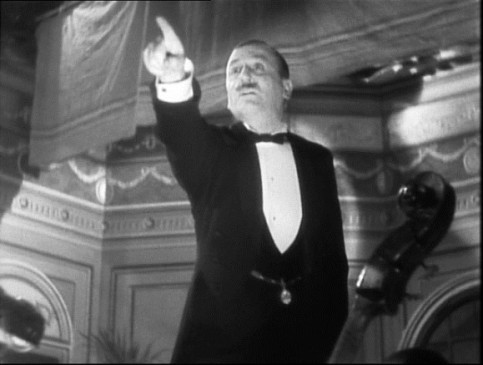
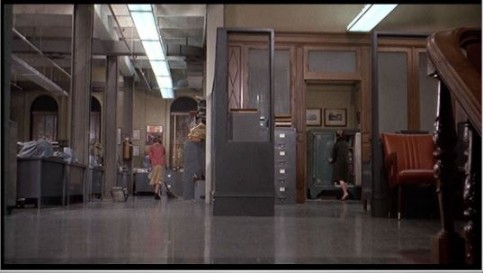
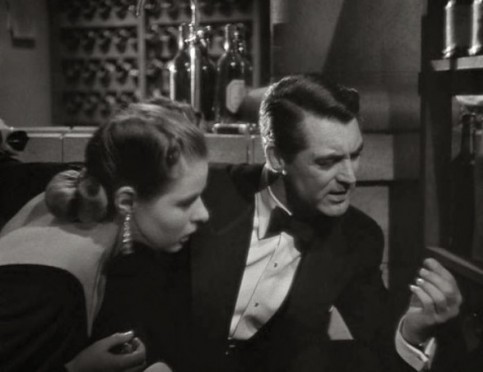
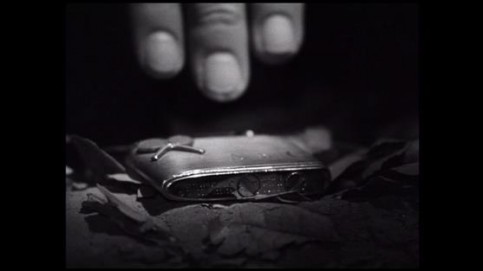
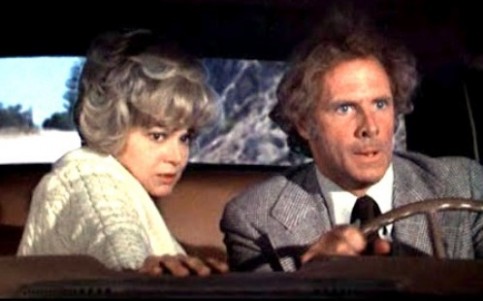
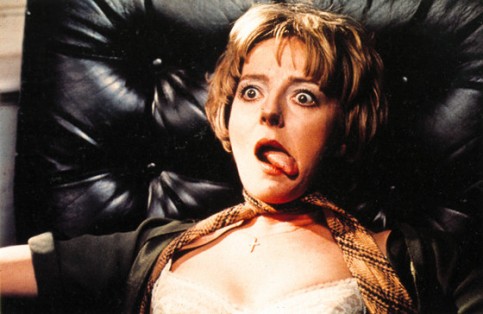
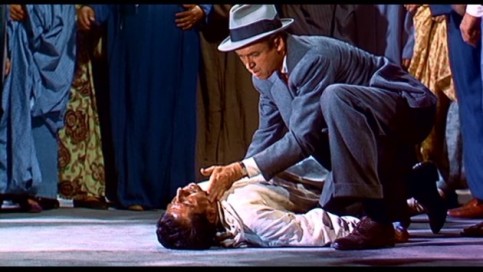
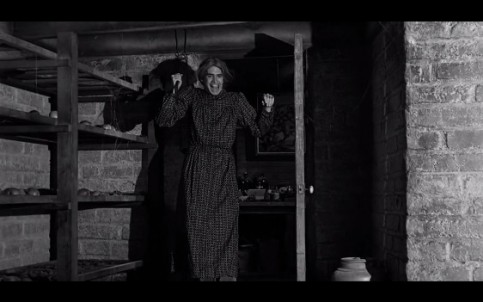
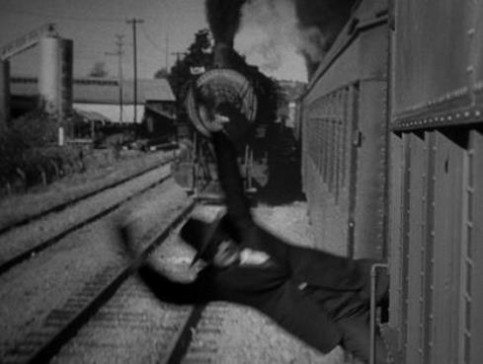
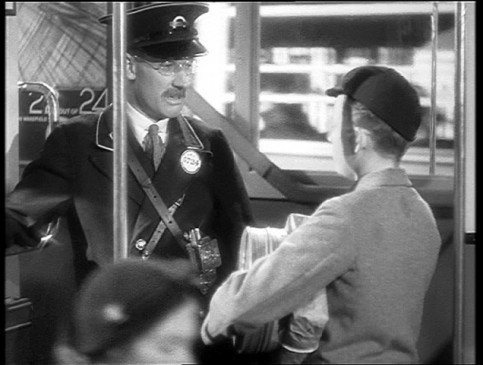
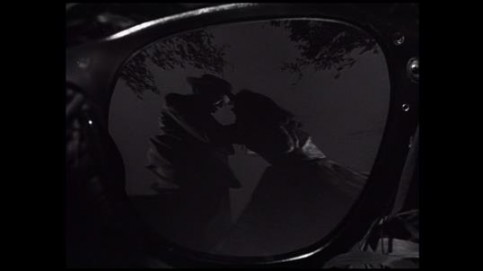
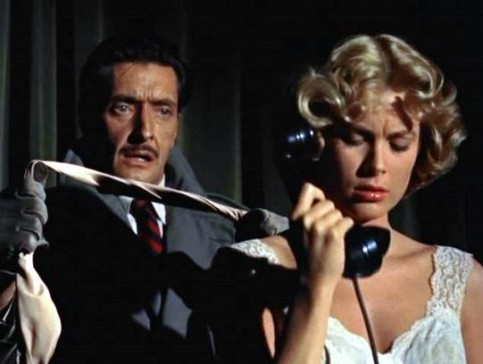
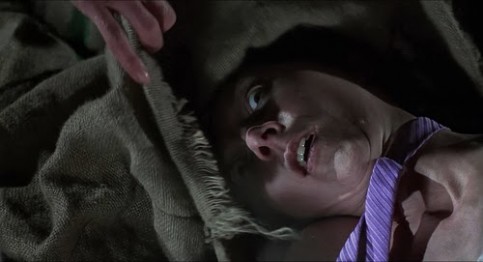
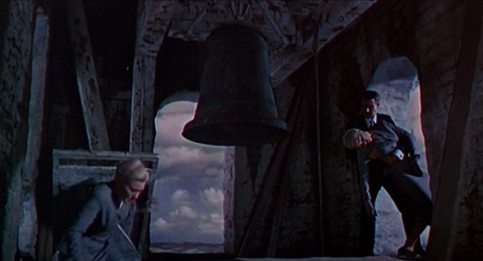
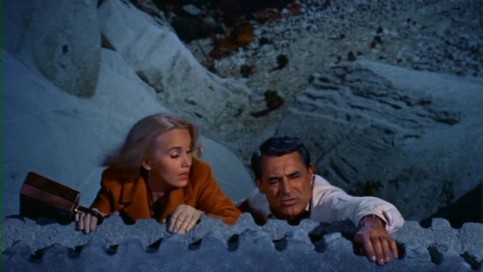
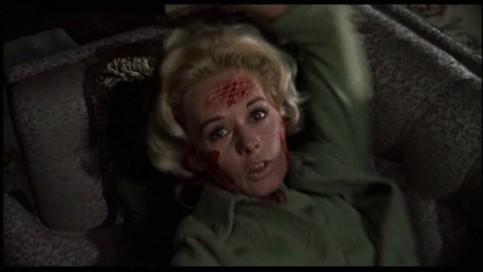
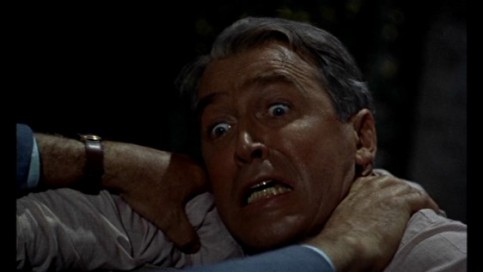
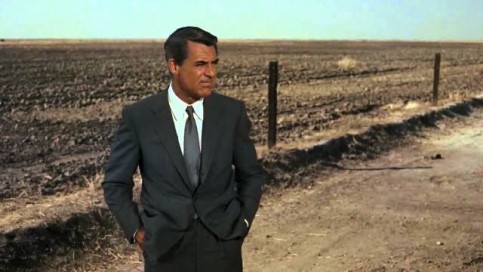
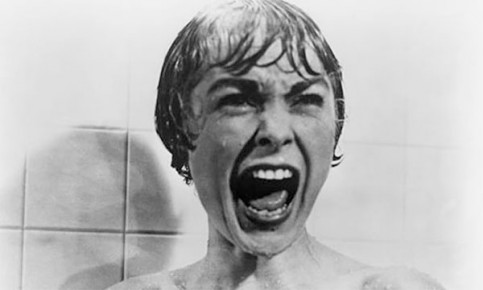
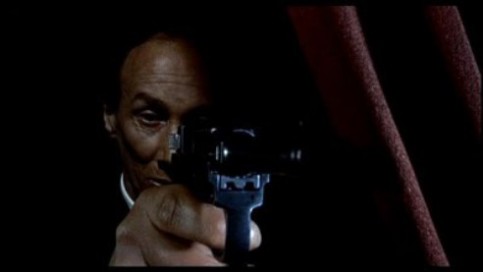
You must be logged in to post a comment Login